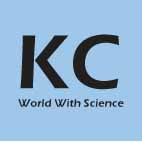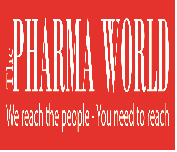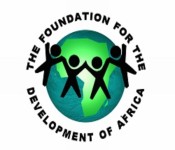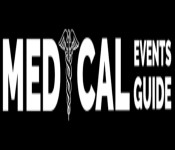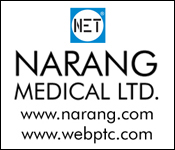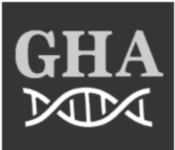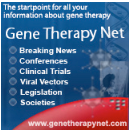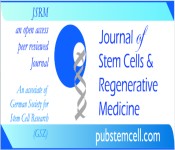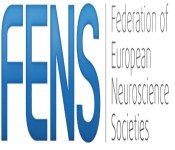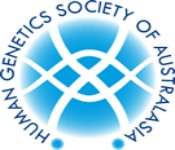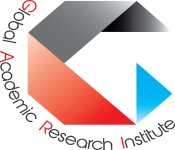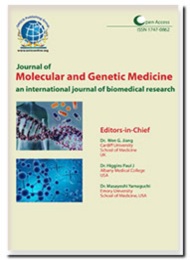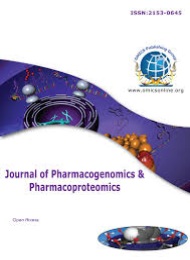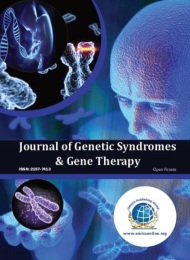
Human Genetics Conferences 2019 | Abu Dhabi | Genomics Events | Human Genetics Meetings | Genetics Congress

Keynote Speaker | Human Genetics Conferences 2019 | Abu Dhabi | Genomics Events | Human Genetics Meetings | Genetics Congress
Theme: Know the current generation to save the future generation
Human Genetics Meet 2019
Human Genetics Meet 2019 invites all the participants from all over the world to attend 6th World Congress on Human Genetics and Genetic Diseases during April 08-09, 2019 | Abu Dhabi, UAE which includes prompt keynote presentations, Oral talks, Poster presentations and Exhibitions.
Human Genetics is the field of biology which deals with the study of inheritance that occurs in the human and Diseases cause by any mutation or changes in the genes are termed as genetic diseases. Today gene editing can be used in various aspects to treat some of the genetic diseases.It also deals with the study of chromosomes and gene expression of an organism can give insight into heredity, genetic variation, and mutations.
Why to attend Human Genetics Conference?
This International Conference provides a global platform to show case their research in the field of Human Genetics and Genetic Diseases which can be discussed through oral presentations, poster presentations, and workshops. Recent trending research like CRISPR gene and their role in cancer treatment could be discussed through this conference. Scientist, Noble Laureate, researcher, research scholar, students and people together who are involved in the research can attend this conference to exchange their ideas and interact with each other.
Why Abu Dhabi?
Abu Dhabi is the capital city of United Arab Emirates and second most populous city after Dubai in the UAE. Most of the attractions of the city are tallest buildings, Historical moments, Ferrari World and so on.
Eastern Biotech in Abu Dhabi, is the first company in the Middle East to offer comprehensive genetic testing services. We have carefully examined the biotechnological horizon to identify the genetic tests most relevant to this region and offer them directly to the people of the Middle East.
ME Conferences selected UAE to conduct its conference on “Human Genetics and Genetics Diseases” so as to provide the global interaction and exchange their ideas via oral presentations, Poster presentation , Workshops and Symposia.
Target Audience of Human Genetics Conference
-
CEO of Genetic companies
-
Directors Of Genetic companies
-
Co-Directors of Genetic companies
-
Researchers
-
Scientists
-
Bioinformatician
-
Genetic engineers
-
Genetic counselors
-
Professors
-
Young Researchers
-
Students
-
Technical Staff
-
Molecular biologists
-
Genetics Industries
-
Genetics Associations and Societies
-
Pharmaceutical companies
Highlights of latest advances on Human Genetics Meet 2019
Track 01: Human Genetics
Human Genetics is the branch of genetics which involves the study of inheritance that occurs in humans. It includes various subfields such as classical genetics, cytogenetics, molecular genetics, biochemical genetics, genomics,population genetics, developmental genetics, clinical genetics, and genetic counseling. Study on human genetics , can explain the human nature, understand and development of effective treatment for diseases.
-
Genetic Differences and Inheritance Patterns
-
Genomics
-
Medical Genetics
-
Population Genetics
-
Mitochondrial DNA
-
Evolutionary Genetics
Track 02: Genomics
Genomics is the field of genetics which deals with the study of structure, function, evolution, mapping, and editing of genomes. Genomics involves the sequencing and analysis of genomes using DNA sequencing and bioinformatics to assemble and analyze the function and structure of entire genomes.
Advancement in genomics made a transformation in discovery-based research and systems biology to understand complex biological systems such as the brain.
-
Functional Genomics
-
Structural Genomics
-
Epigenomics
-
Metagenomics
-
Application of Genomics - Genomic medicine, Conservation Genomics
Track 03: Genetic Diseases
Genetic Disorder may be caused as a result of new mutation or changes that occur in DNA. It is also a hereditary disease that is caused by parents gene. Mostly it caused due to the abnormalities in the genome. Genetic disorders are classified into different types depending upon a single gene or multiple genes. Around 4000 diseases are categorized as single gene defect. Some of the multifactorial disorders include heart diseases and diabetes. Some of the common diseases are asthma, Diabetes, Hypertension, and Obesity.
-
Diagnosis of the Genetic Disorder
-
Prognosis of the Genetic Disorder
-
Gene Therapy
-
Inborn Errors of Metabolism
Some of the Common Genetic Disorders:
-
ADA Immune Deficiency
-
Alzheimer Disease
-
Breast Cancer
-
Cystic Fibrosis
-
Down Syndrome
-
Duchenne Muscular Dystrophy
-
Ectrodactyly
-
Fragile X Syndrome
-
Gaucher Disease
-
Hemophilia
-
Hunter Syndrome
-
Jackson-Weiss Syndrome
-
Melanoma
-
Muscular Dystrophies
-
Neurofibromatosis
-
Retinoblastoma
-
Inherited Arrhythmia Disorders
-
Severe Combined Immunodeficiency Disorder (SCID)
-
Sickle Cell Anaemia
-
Tay-Sachs
-
Thalassemia
-
Turner Syndrome
-
Werner Syndrome
-
Lysosomal Storage Disease
Track 04: Thalassemia
Thalassemia is characterized as an abnormal hemoglobin producing condition. It is a type of inherited blood disorders. Symptoms are mild to severe anemia due to low red blood cells count. Anemia can make one feel tired and have pale skin. Bone problems, an enlarged spleen, yellowish skin, dark urine, and among children slow growth are other related symptoms of Thalassemia.
There are two main types in thalassemia, alpha thalassemia, and beta thalassemia. Diagnosis is done by blood tests including a complete blood count, special haemoglobin tests, and genetic tests. Diagnosis can also be done before birth by prenatal testing.
-
Signs and Symptoms
-
Pathophysiology
-
Prevention
-
Management of Thalassemia
Track 05: Sickle cell Anaemia
Sickle-cell disease (SCD) is a group of blood disorders typically inherited from an individual’s parents. Amongst all, the most common type is known as sickle-cell anaemia (SCA). An abnormality in the oxygen-carrying protein haemoglobin (haemoglobin S) found in red blood cells is seen in SCD. This mainly leads to a rigid, sickle-like shape under certain circumstances. Sickle cell disease Problems typically begin around 5 to 6 months of age. Sickle-cell disease caused due to when inheritance two abnormal copies of the haemoglobin gene, one from each parent. This gene present in chromosome 11. Various subtypes exist, depending on the exact mutation in each haemoglobin gene. An attack can get started with temperature changes, stress, dehydration, and high altitude.
-
Signs and Symptoms
-
Genetics of Sickle Cell Anaemia
-
Pathophysiology of Sickle-Cell Disease
-
Diagnosis of Sickle Cell Diseases
Track 06: Medical Genetics
Medical Genetics is a branch of medicine that involve diagnosis and management of genetic disorders. Slightly medical genetics and human genetics differ in certain ways, where human genetics is a field of scientific research which may or may not apply to medicine but medical genetics depend on the applications of genetics to medical care.
-
Subspecialties - Clinical genetics, Metabolic/Biochemical genetics, Cytogenetics, Molecular Genetics, Mitochondrial Genetics
-
Genetic Counselling
-
Diagnostic Evaluation- Chromosome Studies, Basic Metabolic Studies, Molecular Studies
-
Genetic Medicine- Gene Therapy, Personalized Medicine and Predictive Medicine
Track 07: DNA Sequencing
DNA Sequencing is the process of determining the actual order of nucleotide (Adenine, Guanine, Cytosine, and thymine) within a DNA molecule. This technique is used in various fields such as medical diagnosis, biotechnology, forensic biology, virology, and biological systematics and anthropology.
-
Basic methods - Maxam-Gilbert Sequencing, Chain-Termination Methods
-
Advanced Methods and De Novo Sequencing –
-
Shotgun Sequencing
-
Bridge PCR
-
High-Throughput Methods-
-
Massively Parallel Signature Sequencing (MPSS)
-
Polony Sequencing
-
454 Pyrosequencing
-
llumina (Solexa) Sequencing
-
Solid Sequencing
-
Ion Torrent Semiconductor Sequencing, DNA Nanoball Sequencing
-
Heliscope Single Molecule Sequencing
-
Single Molecule Real Time (SMRT) Sequencing
-
Nanopore DNA Sequencing
-
Methods in development-
-
Tunnelling Currents DNA Sequencing
-
Sequencing by Hybridization
-
Sequencing with Mass Spectrometry
-
Microfluidic Sanger Sequencing
-
Microscopy-Based Techniques
-
RNAP Sequencing
-
In Vitro Virus High-Throughput Sequencing
-
Cancer Genome Sequencing
Track 08: Human Evolutionary genetics
Human evolutionary genetics explain how one human genome will differ from another human genome, from where the evolutionary past arrived that gave rise to it, and also its the current effects. This disparity between the genomes has anthropological, historical, medical and forensic implication and applications. Genetic data can provide important insight into human evolution. It helps one to understand the differences in the human genome and learn about how evolution has affected the development of the genome and acquired diversity.
-
Archaeogenetics
-
Human Genetic Variation
-
Race and Genetics
-
FOXP2 and Human Evolution
-
Genetic Genealogy
Track 09: Genome Editing
It is a type of genetic engineering which involves addition, deletion, and insertion or modification of genome in an organism. The Common thing in this research is to modify DNA sequence and observe the changes on the organism. This method is known as reverse genetics where it is vice versa to forward genetics in which the phenotype will be observed first and genetics of the organism will be studied later.
-
Site-Directed Mutagenesis
-
Gene Therapy
-
Eradicating Diseases
-
Role of CRISPR in Genome Editing
Track 10: Cancer Genetics
Cancer genetics studies about the heritable gene variants in humans and other animals that causes the change in risk of tumour or haematological malignancy. An Individual cancer risk varies and is influenced by familial and sporadic oncogene or tumour suppressor gene mutations as well as rare and common constitutional variants present in the population. For many years, cancer genetics has mainly focused on mutational events which have their own primary effect within the cancer cell.
-
Cancer Genomics
-
Cancer Genome Sequencing
-
Cancer Epigenetics
-
Cancer Pharmacogenetics
-
Next Generation Sequencing in Cancer
-
Molecular Diagnostics for Cancer
Track 11: Epigenetics
Epigenetics is a biological mechanism exhibiting functionally relevant changes to the genome that does not involve changes in the DNA sequences. Epigenetics controls the gene expression through the action of repressor protein that attaches to silencer regions of the DNA, switching between turn on and off of a gene, leading to alteration in the chromosomal regions.
-
Behavioral Epigenetics
-
Computational Epigenetics
-
Nutriepigenomics
-
Epigenetic Therapy
-
Epigenetics of Neurodegenerative Diseases
-
Epigenetic Modifications in Cardiovascular Disease
Track 12: Bioinformatics and Computational Biology
Bioinformatics is an interdisciplinary subject that develops methods and software tools for the understanding concept of biological data. As an interdisciplinary field of science, bioinformatics is a combination of biology, computer science, mathematics and statistics to analyze and interpret the biological data. Using mathematical and statistical techniques, in silico analyses of biological queries is carried out in Bioinformatics.
-
Novel Bioinformatics/Computational Tools and Methods
-
Computational Epigenetics
-
Computational Genomics
-
Cancer Computational Biology
-
Computational Evolutionary Biology
-
Computational Phylogenetics
-
Comparative Genomics
Track 13: Pharmacogenomics and Pharmacogenetics
Pharmacogenomics is the study dealing with the response of an individual with respect to their genome to the administered drugs. As the name suggests it is the combination of two different fields that is pharmacology and genomics. Pharmacogenomics is often used interchangeably with pharmacogenetics. Adverse drug reactions are a significant cause of hospitalizations and deaths in many countries.
-
Toxicogenomics
-
Chemogenomics
-
Personalized Medicine
-
Clinical Pharmacogenetics
-
Pharmacogenetics in Cardiovascular Medicine
Track 14: Immunogenetics
Immunogenetics is under a division of medical genetics that exploits the relationship between the genetics and the immune system. Type 1 diabetes is an Autoimmune disease, it has complex genetic traits which result due to defects in the immune system. New target genes for therapeutic approaches are identified by Identification of genes defining the immune defects. Alternatively, by making use of genetic variation the immunological pathway leading to disease is defined. It highlights the emerging technical and various conceptual breakthroughs that pitch for mechanisms of anti-donor responses.
-
The Immunogenetics of Neurological Disease
-
Immune-Suppressive Effects of Interleukin-6
-
Bone Involvement in Monogenic Autoinflammatory Syndromes
-
Immunoglobulin Genotypes and Cognitive Functions
-
Mechanisms behind TB, HBV, and HIV Chronic Infections
Track 15: Stem Cell Therapy
Use of Stem cells for the treatment and prevention of diseased condition is categorized under stem cell therapy. Bone marrow transplant is found to be most widely used among various stem-cell therapies. Some stem cell therapies were acquired by using umbilical cord blood. Stem-cell therapy has turned into a controversial trailing to the developments where scientists are able to isolate and culture embryonic stem cells, to create stem cells using somatic cell nuclear transfer and their use of techniques to create induced pluripotent stem cells. These controversies often comprehend abortion politics and to human cloning. Stem cell therapy has been exploited for treatments of neurodegenerative diseases and conditions such as diabetes and heart disease.
-
Regenerative Treatment Models
-
Hematopoietic Stem Cell Transplantation
-
Drug Discovery and Biomedical Research
-
Role of Stem Cells in Cancer
Track 16: Gene Mutation
A gene mutation happens due to permanent alteration in the DNA sequence that makes up a gene, in a way that the sequence differs from what is found in most of the normal individual. Mutations range in size; they can affect anywhere from a single DNA base pair to a large segment of a chromosome, one including multiple genes. It can be classified in two major ways that is hereditary mutations and acquired mutation.
-
Site-Directed Mutagenesis
-
Induced Mutations
-
Next Generation Panel Sequencing
-
Autoinflammatory Disease Genes in Gene Mutation
Track 17: Behavioural Genetics
Behavioural genetics is the branch of genetics which deals with the study of behaviour of an organism. It also differentiates behaviour of different organism depending upon the genetics. Behavioural genetic studies have extensively impacted cutting-edge know-how the role of genetic and environmental impacts on behaviour. Different methodology involved are Animal studies, Twin and family studies, Quasi-experimental designs.
-
Evolutionary Psychology
-
Genes, Brain and Behavior
-
Human Behaviour Genetics
-
Psychiatric Genetics
-
Quantitative Genetics
Track 18: Neurogenetics
Neurogenetics is the branch of genetics which studies the development and function of nervous system. Many neurological disorders like Alzheimer ’s and Parkinson’s diseases can be related to neurogenetics and the research of genetics on neurological disorder are still on going.
-
Neurological Disorders- Alzheimer's Disease and Parkinson's Disease
-
Gene Sequencing
-
Methods of Research
-
Behavioral Neurogenetics
-
Current Research
Track 19: Genetic Counseling
Genetic counseling is the technique by which the patients or family liable to an inherited disease are counselled of the results and nature of the sickness, the possibility of growing or transmitting it, and the options open to them in management and family planning. This complicated procedure may be separated into diagnostic (the real estimation of threat) and supportive factors.
-
Genetic Counsellors
-
Whole Genome Sequencing
-
Reprogenetics
-
Genomic Counseling
Track 20: Nutrigenomics
Nutrigenomics is a department of nutritional genomics and is the study of the consequences of ingredients and food parts on gene expression. It is a area of research focusing on figuring out and knowledge molecular-level interaction between vitamins and different nutritional bioactives with the genome.
-
Background and Preventive Health
-
Anti-Aging
-
Public Health Genomics
Track 21: Regenerative Medicine
Regenerative medication is the department of translational studies which involves the method of replacing, engineering or regenerating human cells, tissues or organs to restore or set up regular function. This area holds the promise of engineering broken tissues and organs via stimulating the frame's very own restore mechanisms to functionally heal formerly irreparable tissues or organs
-
Anti-Aging medicine
-
Regeneration in Humans
-
Biomedicine
-
Stem Cell Treatments
Today’s Market Study of Human Genetics in USA| Europe | Middle East | Asia Pacific
Asia Pacific: The global gene expression analysis market is projected to reach USD 7.30 Billion by 2022 from USD 3.39 Billion in 2015, at a CAGR of 9.3% from 2015 to 2022. The primary growth engine in this region is China, which is expected to register a growth rate of 15.2% in the forecast period.
USA: The USA Genetics market is poised to reach USD 20.99 Billion by 2022, growing at a CAGR of 10.9% during the forecast period of 2015 to 2022.
Europe: The Europe genetic market is estimated at USD 4.23 billion in 2018, and is projected to reach USD 6.8 billion by 2022, increasing with a compound annual growth rate (CAGR) of 11.2% during the forecast period, 2016-2022.
Middle East: Market value of genetic companies around the globe was estimated $800in 2018 million in 2018 and it is estimated to be increased by 20% in the next 5 years.
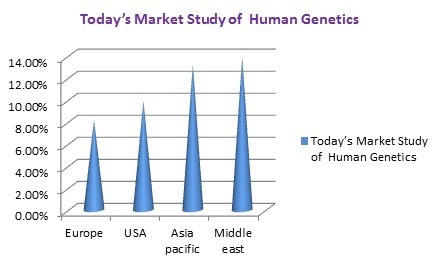
Market Analysis
The global market for Genetic Testing is forecast to reach US$ 4.4 billion by 2020.
The regional analysis includes North America, Europe, Asia Pacific, Middle East and rest of the world.
The global human genetic market expected to grow with a CAGR of more than 10% in the upcoming years. The rise of growth rate is due to increase in technological advancement and various measures taken by US government to expand the national DNA databases.
The Duchene Muscular Dystrophy (DMD) treatment market is expected to change radically by 2020 in the six major pharmaceutical markets
A large number of DMD patients are not expected to be eligible for these promising new drugs, leaving vast opportunity for developers to deliver new therapies and for continued growth in the DMD market beyond 2020.
USA: Approximately, more than 24292 members involved in Genetics and related researches.
Europe: Approximately, more than 56083 members involved in Genetics and related researches.
Global: Approximately, 1292130 members involved in Genetics and related researches.
Behaviour and decision-making related to genetics and molecular biology, biotechnology, pharmaceuticals, medicals and academia.
Conference on Human Genetics basically deals with the latest research and developments in the topic of genetics and molecular biology. This Conference is providing a perfect platform for all the leading Research Scholars, and Scientists who achieved eminence in their field of study, research academicians from the universities and research institutions, industrial research professionals and business associates along with PhD Students to participate in this event and Share their knowledge about the latest scientific advancements on this topic.
ME Conferences welcomes you to attend the 6th World Congress on Human Genetics and Genetic Diseases during April 08-10, 2019 Abu Dhabi, UAE. Human Genetics Meet 2019 inviting all the participants to share their knowledge and research in the area of Human Genetics and Genetic Diseases.
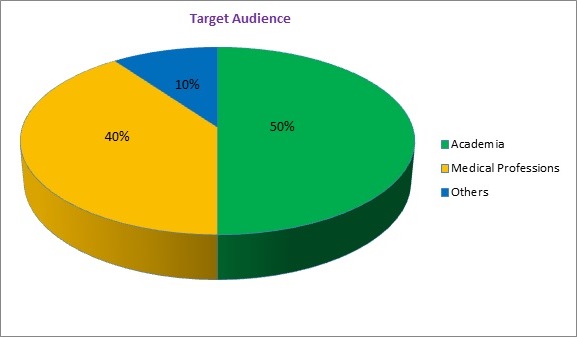
Related Conferences:
Human Genetics Confernces| Genetic Diseases Congress | Genomics Meetings| Medical Genetics Events
1. 9th World Conference on Women’s Health and Breast Cancer, December 09-10, 2019 Abu Dhabi, UAE
2. International Conference on Molecular Markers and Cancer Therapeutics, October 14-15, 2019, Abu Dhabi, UAE
3. 6th World Congress on Epigenetics and Chromosome, November 14-15, 2019, Cape Town, SouthAfrica
4. International Conference on Biomarkers and Cancer Targets, October 14-15, 2019, Abu Dhabi, UAE
5. International Conference on Cell Biology and Genomics, June 10-11, 2019, Helsinki, Finland
6. 30th International Conference on Public Mental Health and Neuroscience, June 17-18, 2019, Dubai, UAE
7. International Conference on Biomarkers and Clinical Research, July 15-16, 2019, Abu Dhabi, UAE
8. International Cystic Fibrosis Conference: A cure for all, November 25-26, 2019, Dubai, UAE
9. 26th Cancer Genomics Congress: New Era for Cancer Prevention, July 15-16, 2019, Abu Dhabi, UAE
10. 12th Annual Conference on Stem Cell & Regenerative Medicine, June 13-14, 2019, Helsinki, Finland
11. 12th International Conference on Pharmacoepidemiology and Clinical Research, March 18-19, 2019, Dubai, UAE
12. 10th International Tissue Repair and Regeneration Congress, June 13-14, 2019, Helsinki, Finland
13. 2nd World Congress on Rare Diseases, December 02-03, 2019, Helsinki, Finland
14. 2nd International Epigenetics and Epitranscriptomics Conference, November 28-29, 2019, Bucharest, Romania
15. International Conference on Cell Biology and Genomics, June 10-11, 2019, Helsinki, Finland
16. 2nd Middleeast Pharmacy and Pharmaceutical conference, December 09-10, 2019, Dubai, UAE
17. 25th International Conference on Human Metabolic Health- Diabetes, Obesity & Metabolism, March 21-22, 2019, Dubai, UAE
18. 2nd International Conference on Molecular Biology and Medicine, June 10-11, 2019, Helsinki, Finland
19. 21st World Conference on Pharmaceutical Chemistry and Drug Design, December 16-17, 2019, Dubai
20. 12th International Conference on Genomics and Molecular Biology, April 15-17, 2019 Berlin, Germany
21. 9th International Conference and Exhibition on Advanced Cell and Gene Therapy, March 21-22, 2019 Rome, Italy
Related Societies
Europe
1. Clinical Epigenetics Society
3. Association of Clinical Cytogeneticists
4. British Society for Human Genetics
6. Clinical Molecular Genetics Society
9. Austrian Society for Human Genetics
10. Belgian Society for Human Genetics
11. Czech Society of Medical Genetics
12. Danish Society of Medical Genetics
13. Dutch Association of Clinical Genetics
14. Finnish Society of Medical Genetics
15. French Society of Human Genetics
16. European Society for Medical Oncology
17. European Oncology Nursing Society
18. European Association for Cancer Research
19. European Society of Human Genetics
20. European Genetics Foundation
21. European Cytogeneticist Association
22. European Society of Gene Therapy
23. Clinical Molecular Genetics Society
USA
2. Hematology/Oncology Pharmacy Association
3. American Association for Cancer Research
4. Association of International Cancer Research
5. International Agency for Research on Cancer
6. American Society of Human Genetics
7. National Society of Genetic Counselors
8. American College of Medical Genetics
9. American Board of Genetic Counseling
10. American Board of Medical Genetics
11. Nation Coalition for Health Education in Genetics
12. International Society of Nurses in Genetics
13. Association of Genetic Technologists
14. Genetic Society of America
Asia and Middle East
1. Australian Epigenetics Alliance
2. Asian Clinical Oncology Society
3. Asian Oncology Nursing Society
4. Asian Society of Gynecologic Oncology
5. Asian Society for Neuro-Oncology
6. East Asian Union of Human Genetics Societies
7. Association of Chinese Geneticists in America
8. Hong Kong Society of Medical Genetics
9. Japan Society of Human Genetics
11. Korean Society of Human Genetics
12. Genetics Society of Vietnam
13. Turkish Association of Medical Genetics
14. Japan Society of Gene Therapy
15. American Human Geneticists of Indian Subcontinent Origin
Cystic hygroma
Introduction
A Cystic hygroma is a fluid filled sacs which occurs due to blockage in the Lymphatic system. It mostly occurs in neck and head area, but it can be found anywhere in the body. It may be found in a baby during a pregnancy ultrasound, or it may be clear at birth as a delicate bulge beneath the skin. Cystic hygromas influence 1 in 800 pregnancies and 1 in 8,000 live births. In 80% of cases, cystic hygromas show up on the face, counting the head, neck, mouth, cheek, or tongue. The growths may also occurs in other parts of the body; i.e. armpits, chest, legs, chest, buttocks and groin.
When it is distinguished on pregnancy ultrasound, there's an increased chance for miscarriage. In some cases, it isn't found until a person is older. Indications can change depending on its size and the particular area, and it can possibly cause issues with adjacent structures or organs.
Cystic hygromas usually influence children, but there have been uncommon cases of them showing up in adulthood.
Causes
The Cystic hygromas is caused due to environmental and genetic factors both. The exact cause of cystic hygromas isn't known but hereditary anomalies are present in around 25% to 75% of influenced children. The disease is more common in people with Turner syndrome, Down syndrome, or Klinefelter syndrome.
Symptoms
Symptoms may vary depending on the area of the cysts. A few children may not encounter any indications other than the growth.
If a child has symptoms, they may include:
· fluid-filled sacs on the tongue
· large cysts that appear blue
· obstructive sleep apnea, a sleep disorder that causes breathing to stop and start
· breathing and feeding difficulties
· failure to thrive
· bone and teeth abnormalities
In rare cases, the hygromas may bleed or become infected.
Designer baby
A designer baby is a genetically modified organism whose DNA sequencing has been altered using genetic engineering techniques. It is not a general way of Genetically Modified Organism or GMO which are used in the production of different types of medications, foods, and persuading scientific research. It is a great milestone in the field of human genetics. The designer baby which is made in vitro condition chooses the uncommon characteristics, which can change from lowered disease-risk to gender determination. The DNA sequence of the baby is altered by the addition of genetic material from an unrelated organism or deletion of a particular sequence.
With the growing research and technologies, scientists are developing new methods of genetic engineering and getting closer to being able to fiddle with the genes of a human embryo.
Designer babies represent an area inside embryology that has not ended up a practical reality till now, but in any case, draws out ethical concerns about whether or not it'll get to be fundamental to execute limitations regarding designer babies within the future.
Pros and Cons of Designer Babies
Advantages:
· Reduces risk of genetic diseases
· Reduces risk of inherited medical conditions
· Keep pace with others doing it
· Better chance the child will succeed in life
· A better understanding of genetics
· Increased life span
· a completely new gene can be given to the child (non-hereditary)
· Preventing the next generation from having any hereditary disease.
Disadvantages:
· Termination of embryos
· Could create a gap in society
· The possibility of damage to the gene pool
· Baby has no choice in the matter
· Genes often have more than one use
· Geneticists are not perfect
· Loss of Individuality
· Other children in the family could be affected by the parent's decision
· Only the rich can afford it
Cancer epigenetics
Epigenetic mechanisms are fundamental for normal development and maintenance of tissue-specific gene expression patterns in warm-blooded animals. Disturbance of epigenetic processes can lead to altered gene work and dangerous cellular transformation. Worldwide changes within the epigenetic landscape are a trademark of cancer.
Epigenetic changes may be just as important, or indeed more critical, than hereditary mutations in a cell's transformation to cancer
The greatest conceptual breakthrough in the war on cancer was the acknowledgment by the 1980s that it is always a hereditary disease. Now and then the hereditary flaw is acquired. In some cases, it is the result of exposure to an exterior agent such as tobacco smoke or radioactivity. In some cases, it is plain bad luck; a miscopying of a piece of DNA during the typical prepare of cell division.
Metabolic recoding of epigenetics in cancer
Cancer-induced metabolic changes modify the epigenetic scene, particularly adjustments on histones and DNA, in this manner promoting harmful change, adjustment to lacking nutrition, and metastasis. The accumulation of certain metabolites in cancer can target epigenetic proteins to universally change the epigenetic landscape. Cancer-related metabolic changes lead to the locus-specific recoding of epigenetic marks.
The reversible nature of epigenetic variations has driven to the development of the promising field of epigenetic treatment, which is as of now making an advance with the later FDA endorsement of three epigenetic drugs for cancer treatment. In this survey, we examine the current understanding of changes within the epigenetic scene that occur in cancer compared with normal cells, the parts of these changes in cancer initiation and movement, counting the cancer stem cell model, and the potential utilizes of this information in planning more effective treatment procedures.
Unique Brain 'Fingerprint' Can Predict Drug Effectiveness
A unique "brain fingerprint" may offer assistance to distinguish the foremost useful therapeutic intervention for individual patients with neurologic clutter such as Alzheimer's disease, possibly saving millions from experiencing ineffective treatment, modern research suggests. Investigators utilized computational brain modeling and artificial intelligence strategies to analyze positron emission tomography (PET) and MRI from over 300 patients with Alzheimer's Disease and healthy controls.
Thanks to technological advancement as that might change. From later discoveries, it is presently possible to think of personalized treatment for patients with certain neurological conditions. The concept capitalizes in reading the brain’s fingerprint. This tech can be utilized to better group patients with neurological illnesses so as to put them in line with the most successful therapeutic arrangements based on their particular needs.
The technique is called pTIF (personalized Therapeutic Intervention Fingerprint) and it rotates around anticipating the effectiveness of focusing on particular biological perspectives, such as brain amyloid/tau deposition, neuronal, functional dysregulation, and inflammation — with the sole expectation of managing how a patient’s disease evolves. This treatment option capitalizes on present-day innovations, artificial intelligence, and computational brain modeling.
The interesting portion is that usually the only study that has ever unmasked a direct connection between brain dynamics, molecular and cognitive alterations and predicted therapeutic reactions in patients. Meaning, specialists can presently utilize subtypes to plan drugs that do best with the specific patient, based on their phenotypic brain characteristics and their unique gene expression profile. Something the researchers expressed could be a major milestone in personalized medicine, and could immensely progress the effectiveness of treatment. Top on that this will cut the budget for clinical drug trials since researchers will be able to choose patients without guesswork.
Lithium: a key to the genetics of bipolar disorder
Lithium is a decades-old treatment for bipolar disorder, profoundly effective in those who react. It comes with a few side effects, and lithium has been superseded in huge part by newer mood stabilizers. But lithium’s effectiveness in the one-third of bipolar patients who react to the medicate compares favourably with the newer medications. Neglect of this reasonable medicine implies bipolar patients who could be helped never get a chance to encounter its benefit.
Until now, analysts have not caught on why these patients have not reacted to the common treatment, whereas others have reacted well to the drug. Now as the universal Consortium on Lithium Lithium is a decades-old treatment for bipolar disorder, profoundly effective in those who react. It comes with a few side effects, and lithium has been superseded in huge part by newer mood stabilizers. But lithium’s effectiveness in the one-third of bipolar patients who react to the medicate compares favourably with the newer medications. Neglect of this reasonable medicine implies bipolar patients who could be helped never get a chance to encounter its benefit.
Genetics, the bunch has considered the underlying hereditary qualities of more than 2500 patients treated with lithium for bipolar disorder. Researchers found that patients clinically analysed with bipolar disorder who showed a poor reaction to lithium treatment all shared something in common: a high number of genes already recognized for schizophrenia, This doesn't proof that the patient too had schizophrenia -- but in case a bipolar patient features a high 'gene load' of schizophrenia hazard genes, our research appears they are less likely to reply to mood stabilizers such as lithium. In addition, researchers identified new genes within the immune system that will play a vital biological part within the underlying pathways of lithium and its effect on treatment response.
Impact of epigenetics in the management of cardiovascular disease: a review
Epigenetics is the new study of all the heritable changes which have a tremendous potential to introduce new biomarkers in the Cardiovascular disease (CVD) field and also new avenues for innovative research therapies.
Cardiovascular disease is one of the leading diseases and is responsible for one-third of all deaths worldwide and accounting for an important burden of healthcare expenditure.
Epigenetic mechanisms represent a stable cellular memory that allows the propagation of gene activities from one generation of cells to the next generation.
There are several pathological conditions which affects the heart including Cardiac hypertrophy, Coronary artery disease, hypertension etc. which leads to the failure of the heart.
Already, epigenetic modifications were reported to play an urgent part in process underlying CVD, counting atherosclerosis, irritation, and hypertension. To date, most of the restrictions for the complete understanding of the hereditary impact on cardiovascular diseases (CVD) are likely due to the inactive basic assessment of the DNA code.
In epigenetics, through the study of a few energetic pathways, alter moreover the genome’s functionality under exogenous impact, which may recognize novel mechanisms and targets within the control of gene regulation, with noteworthy acquisitions in CVD information of its hereditary risk and pathophysiology. In fact, epigenetic alterations such as histones alterations, DNA methylation, and little noncoding RNAs occur in response to natural changes. Pollution and diet will significantly alter these epigenetic alterations and trigger susceptibility to CVD
There are several potential benefits of using the epigenetic biomarkers such DNA methylation of specific genes or miRNAs. As compared to the classical biochemical biomarkers present ones can give valuable data about gene functions and phenotypes which would be helpful for CVD diagnosis, outcome, prognosis, treatment monitoring and stratification.
Conference Highlights
- Human Genetics
- Genomics
- Genetic Diseases
- Medical Genetics
- DNA Sequencing
- Pharmacogenomics and Pharmacogenetics
- Human Evolutionary Genetics
- Epigenetics
- Bioinformatics and Computational Biology
- Cancer Genetics
- Immunogenetics
- Thalassemia
- Sickle Cell Anemia
- Genome Editing
- Stem Cell Therapy
- Gene Mutation
- Behavioural Genetics
- Neurogenetics
- Genetic Counseling
- Nutrigenomics
- Regenerative Medicine
To share your views and research, please click here to register for the Conference.
To Collaborate Scientific Professionals around the World
| Conference Date | April 08-09, 2019 | ||
| Sponsors & Exhibitors |
|
||
| Speaker Opportunity Closed | Day 1 | Day 2 | |
| Poster Opportunity Closed | Click Here to View | ||
Useful Links
Special Issues
All accepted abstracts will be published in respective Our International Journals.
- Journal of Molecular and Genetic Medicine
- Journal of Pharmacogenomics & Pharmacoproteomics
- Journal of Human Genetics & Embryology
Abstracts will be provided with Digital Object Identifier by
































